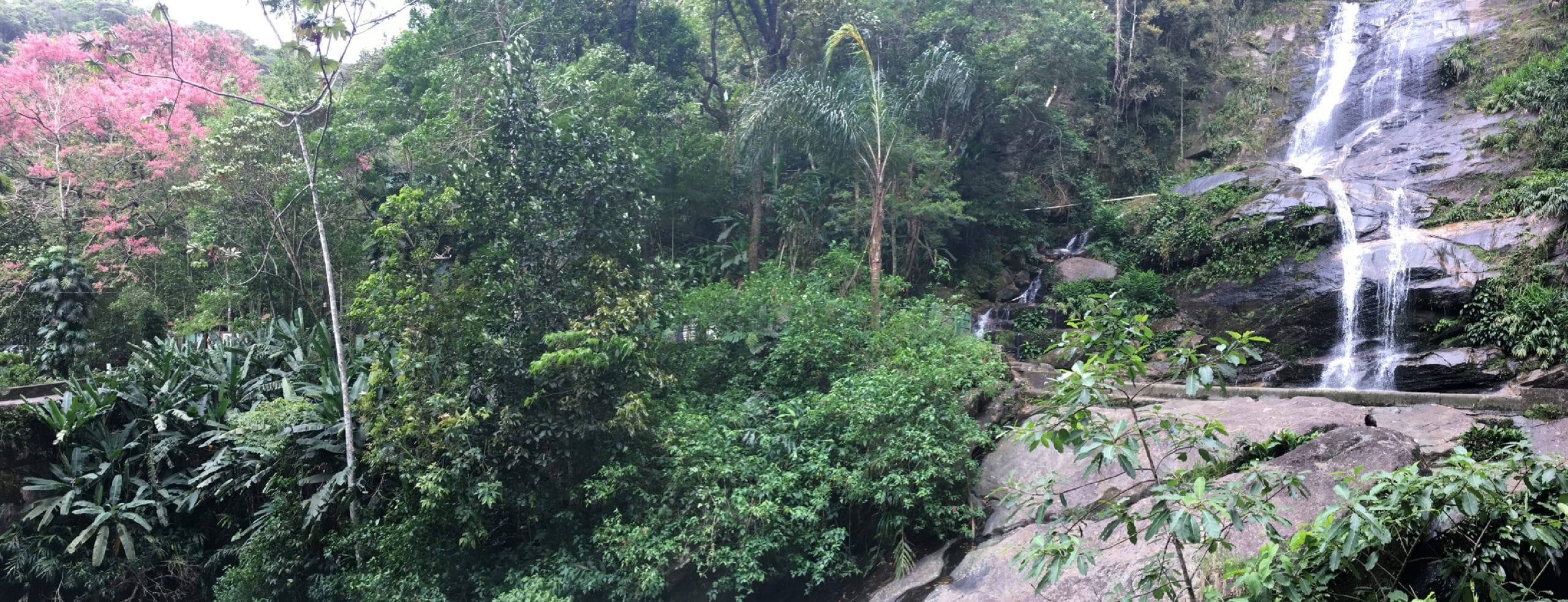Discover Santa Teresa & The Selarón Stairs in Rio de Janeiro
A Neighborhood Full of History and Art
Santa Teresa is known as the artistic soul of Rio de Janeiro. Perched on the hills, this neighborhood was once the retreat of the city’s elite, who built elegant mansions to escape the summer heat of the lowlands.
Its history dates back to the 17th century, when the area was a dense forest and a refuge for runaway slaves. In 1750, the first female convent in Rio was founded here—the Santa Teresa Convent, which gave the neighborhood its name.
Today, Santa Teresa is a bohemian hub full of character. It draws visitors with its historic architecture, art studios, street musicians, and panoramic views of the city.

The Famous Tram of Santa Teresa
One of the most iconic features of the neighborhood is its historic tram, affectionately called the “bondinho de Santa Teresa.” It first reached the top of the hill in 1872.
Despite being shut down after two serious accidents in 2011, it was later restored and declared part of the city’s cultural heritage. Riding this tram across the Arcos da Lapa aqueduct is a must-do experience.
Why Visit Santa Teresa?
Santa Teresa is full of attractions that blend culture, history, and views:
-
The Santa Teresa Convent, still an important landmark.
-
Largo dos Guimarães, the heart of local life with shops, handicrafts, and occasional live jazz.
-
Chácara do Céu Museum, with a remarkable art collection.
-
Parque das Ruínas, a cultural center with concerts, art events, and views of Rio.
-
Gastronomy: From budget eateries to gourmet spots, many restaurants offer city views from their hilltop terraces.
This charming area feels worlds away from the city’s busy pace, offering a peaceful, creative atmosphere.
The Escadaria Selarón – A Living Artwork
The Selarón Stairs, or Escadaria Selarón, connect Lapa and Santa Teresa. What was once a regular staircase became a global landmark thanks to the Chilean artist Jorge Selarón, who began transforming it in 1990.
Covered with over 2,000 tiles from more than 60 countries, the staircase stretches 215 steps and reflects a vibrant and evolving artistic vision. Selarón called it his “living and mutating work of art.”
Look closely and you’ll spot images of pregnant women, a mysterious and personal symbol for the artist, believed to be tied to a painful story from his past during Chile’s dictatorship.

Where Are the Selarón Stairs?
The staircase starts at the corner of Teotônio Regadas and Joaquim Silva streets in Lapa. It ascends through Manoel Carneiro Street into the Santa Teresa neighborhood and ends near the Santa Teresa Convent.
As you explore, you’ll also find other mosaic works by Selarón scattered throughout the nearby streets and even around the famous Arcos da Lapa.
The Legacy of Jorge Selarón
Jorge Selarón was born in Chile in 1947 and traveled to more than 50 countries before settling in Rio. He dedicated his life to the staircase, often painting to fund more tiles.
His passion left a lasting mark on the city, turning a simple staircase into one of Rio de Janeiro’s most photographed landmarks. Sadly, Selarón was found dead on the steps in 2013, but his work continues to inspire locals and visitors alike.
What Makes Santa Teresa & Selarón Special?
-
A unique blend of history, art, and architecture.
-
Breathtaking views of Rio from hilltop locations.
-
A vibrant community of artists, musicians, and chefs.
-
The Selarón Staircase, one of the most iconic artistic landmarks in Brazil.












